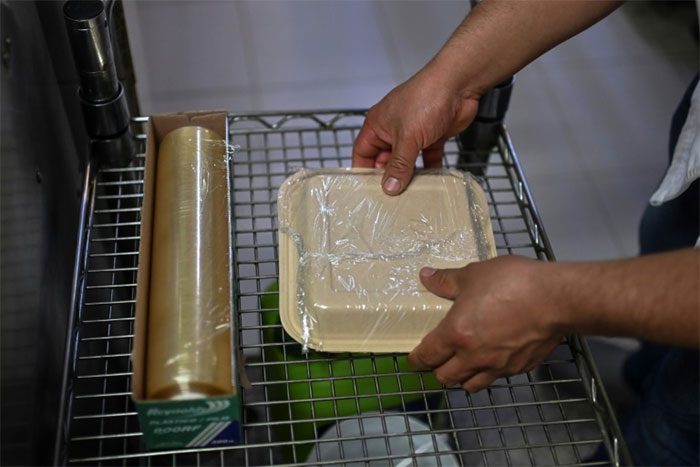Among alternatives to petroleum-based plastics, biodegradable plastics are increasingly gaining popularity.
Primarily used in packaging products, these biodegradable plastics currently account for less than 1% of global plastic production.
Bioplastics are produced using less fossil fuel, incorporating non-fossil agricultural products such as sugarcane bagasse, corn, or wheat starch.

Biodegradable and compostable food wrap is being used in Mexico. (Photo: barrons.com).
According to the definition in Europe, bioplastics are polymers derived from biological sources that are capable of biodegrading both in natural environments and under industrial conditions. The minimum requirement to be considered biobased is 50%, but this percentage will increase to 60% next year.
Laboratories worldwide are continuously developing new types of naturally sourced plastics. The French chemical company Arkema is developing PBAT bioplastic made from castor oil, which is used in the production of sports shoes and automotive interiors. A Swiss brand, along with partners from Taiwan (China), is also researching Bananatex – a biodegradable fabric made from banana leaves.
However, not all bioplastics completely degrade in natural conditions. Some types of plastics, such as PLA (polylactic acid), need to be composted industrially at temperatures between 35 – 60 degrees Celsius.
According to the Heinrich Böll Foundation, most bioplastics cannot fully biodegrade or compost. Therefore, Ms. Nathalie Gontard, Research Director at the French National Institute for Agriculture, Food, and Environment, assesses that biobased plastics do not provide real benefits because they do not naturally degrade but rather break down into microplastics and nanoplastics.
Ms. Gontard emphasizes the ambiguity surrounding the term “biodegradable”, noting that definitions vary widely. Some materials are considered biodegradable if they decompose within months or years, while others may take much longer.
While bioplastics can reduce CO2 emissions in the plastic industry, experts warn that the increasing demand for agricultural land to grow raw materials may lead to land-use changes or deforestation, potentially increasing CO2 emissions.
Ms. Pauline Debrabandere from the NGO Zero Waste emphasizes that the production of bioplastics shifts the burden onto agricultural land, which is primarily used for food production.



















































